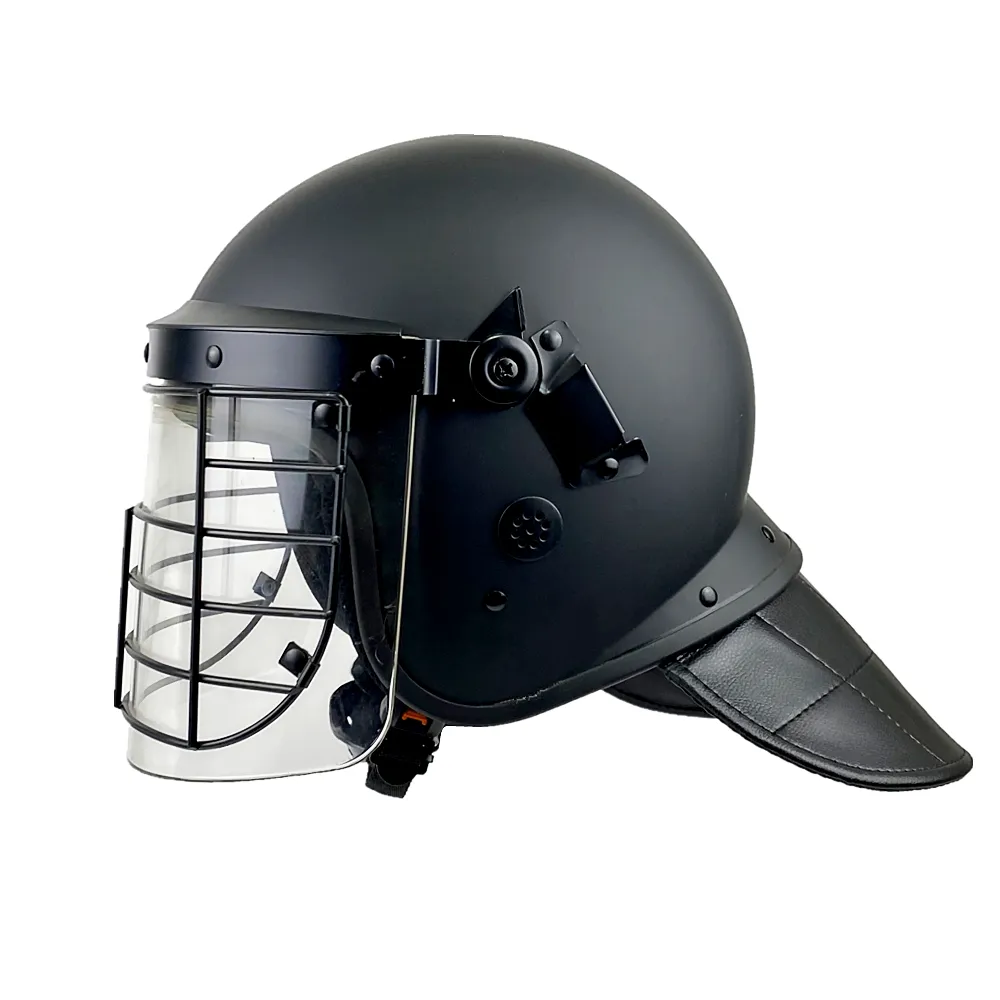
In an age where safety equipment is continually evolving to protect against various forms of violence, the question of how protective riot helmets really are has become increasingly relevant. Historically designed to safeguard law enforcement and military personnel during violent confrontations, these helmets have seen numerous advancements. But with rising concerns about ballistic threats, many are left wondering if riot helmets can actually stop bullets.
So back to the question before, are riot helmets bulletproof? The short answer is no, riot helmets are not bulletproof. They are primarily designed to provide protection against blunt force trauma, such as from rocks or batons, and to shield the wearer from chemical irritants like tear gas. For a deeper understanding of the capabilities and limitations of riot helmets, let's delve into this topic further.
Materials and Construction of Riot Helmets
Riot helmets are typically constructed using high-impact resistant materials such as polycarbonate plastics and composite materials designed to absorb and distribute the force from blows, projectiles, and sharp objects. The outer shell is often combined with a thick, padded inner lining that helps mitigate the energy from impacts. Additionally, these helmets are designed with visors to protect the face from harmful substances and flying debris.
However, the materials used in riot helmets are not intended to withstand the high velocities and intense energy of bullets. While polycarbonate is a sturdy material, it lacks the advanced ballistic resistance properties found in materials such as Kevlar or ultra-high-molecular-weight polyethylene (UHMWPE). These materials are typically used in bulletproof vests and ballistic helmets which are subjected to rigorous ballistic testing standards to ensure they can stop specific types of ammunition.
Safety Standards and Testing
Riot helmets are tested according to different standards than ballistic helmets. They are evaluated for their ability to protect against impacts, penetration by sharp objects, and exposure to chemicals. Safety standards like the National Institute of Justice (NIJ) Standard 0104.02 for riot helmets focus on ensuring that these helmets can withstand high-energy impacts from blunt objects, as well as offering adequate facial and respiratory protection.
Conversely, ballistic helmets undergo stringent testing to meet specific NIJ standards for ballistic resistance. These tests involve firing various calibers and configurations of ammunition at the helmets to verify their protective capabilities. Riot helmets do not undergo such testing because they are not intended to provide ballistic protection. This fundamental difference in safety standards and testing highlights the distinct purposes these protective gear items serve.
Riot Helmets vs. Ballistic Helmets
Given their different protective capabilities, it's crucial to understand when to use a riot helmet versus a ballistic helmet. Riot helmets are ideal for scenarios involving crowd control, protests, and general law enforcement operations where the risk of being struck by flying debris, batons, or exposure to chemical agents is high. In these situations, the design and materials of riot helmets provide substantial protection and visibility for the wearer.
On the other hand, in environments where there is a substantial risk of gunfire, ballistic helmets are essential. These helmets are designed to stop or mitigate the impact of bullets, offering life-saving protection in combat zones or tactical operations. They often employ advanced materials and intricate construction techniques to create a balance between protection and weight, ensuring that the wearer has both mobility and a high level of defense against firearms.
Technological Advancements and Future Prospects
While current riot helmets are not bulletproof, technological advancements in materials science hold potential for future development. Researchers are constantly exploring new materials and composites that could potentially enhance the protective capabilities of riot gear without compromising mobility and comfort. Innovations such as graphene, liquid armor, and new synthetic fibers offer promising avenues for creating multi-functional helmets that could offer both impact resistance and some degree of ballistic protection.
Moreover, advancements in helmet design and manufacturing processes could also lead to more ergonomic and versatile protective gear. With ongoing collaboration between material scientists, engineers, and law enforcement agencies, the future might see the development of hybrid helmets that cater to a broader range of threats, enhancing overall safety for personnel in various high-risk environments.
Conclusion
In conclusion, while riot helmets provide excellent protection against blunt force trauma, projectiles, and chemical irritants, they are not designed to be bulletproof. Their construction and materials are tailored to different threats compared to ballistic helmets, which are specifically made to stop bullets. Understanding this distinction is crucial for ensuring that the appropriate protective equipment is used in different scenarios. Looking forward, advancements in materials science may continue to improve the protective capabilities of riot helmets, but for now, they remain distinct from their ballistic counterparts.
FAQ
Do riot helmets offer any ballistic protection at all?
Riot helmets do not offer ballistic protection as they are designed to safeguard against blunt impacts and chemical irritants.
Can a ballistic helmet be used for riot control?
While a ballistic helmet can technically be used for riot control, it may not offer the same level of protection against chemical agents and impacts from non-ballistic threats as a specialized riot helmet.
What materials are used in making riot helmets?
Riot helmets are typically made from high-impact resistant polycarbonate plastics and composite materials aimed at providing protection against blunt force and chemical exposure.














